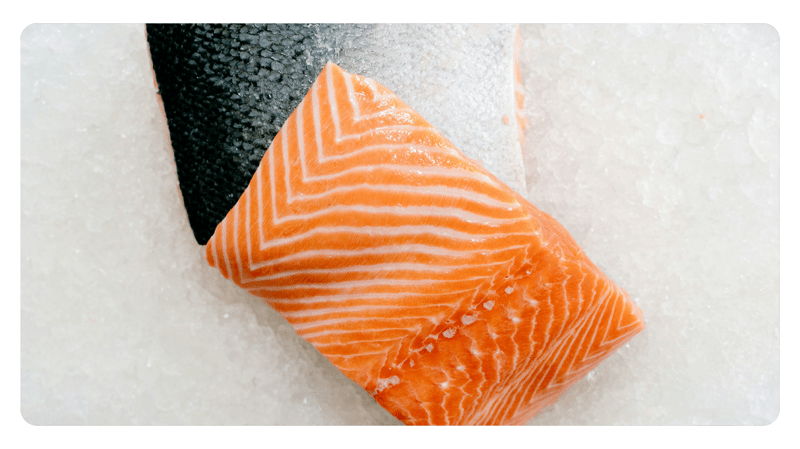Why Salmon Prices Are Dropping in 2025 — And What It Signals for the Industry

Norwegian salmon prices are down 30% since the start of the year. What makes this drop different isn’t just the scale — it’s the timing.
After a period of relatively stable production conditions across the globe, the industry is experiencing an unseasonably early decline in prices. In January, salmon was trading near NOK 120/kg. By March, prices had fallen to NOK 85/kg. It’s a plunge that has surprised even veteran traders — not just because of how much prices fell, but how fast.
So what exactly is happening in 2025 that’s different from previous years? And more importantly, what can farms and suppliers do when prices become this unpredictable?
Let’s take a closer look.
A New Kind of Price Volatility
Over the last two decades, the price of Norwegian salmon has evolved through several distinct phases
- 2000–2016: A relatively stable period, with prices slowly climbing from NOK 20/kg to NOK 40/kg.
- 2016–2021: A noticeable shift. Prices rose to an average around NOK 60/kg, but more significantly, seasonal volatility emerged. Annual swings could now reach NOK 30/kg.
- 2021–2025: Volatility intensified. Price swings became sharper and faster. In recent years, fluctuations of 20–30% have occurred within weeks — not months.
What’s especially unusual this year is that this major price drop arrived far earlier than normal. The typical seasonal dip that we’ve seen in recent years tends to occur in late summer. This year, prices began falling before the end of January — a pattern not seen in recent history.
Traders are sounding alarms. One export trader told iLaks in March, “Prices have dropped significantly this week. We’re not done yet, and many are left holding unsold fish. It’s getting ugly.”
And that’s before potential new trade tariffs or geopolitical disruptions take hold in the coming months.
Oversupply Isn’t the Full Story
The most common explanation for the drop is straightforward: too much large fish on the market.
It’s true that exports are up — Norway shipped over 70,000 tonnes of fresh salmon in March alone, outpacing last year’s volume. But similar or even higher volumes have been seen in past years (like 2021) without triggering the same level of price collapse. In fact, 2022 through 2024 saw comparable harvest levels without such a dramatic early-year decline.
So supply alone doesn’t explain the situation.
A second factor may be international competition. Scotland, in particular, has returned to the market with strong volumes and lower prices. One Norwegian seller noted, “They [Scotland] have been undercutting us all week. That is unusual.” When global regions rebound at the same time, supply pressure intensifies — and price wars begin.
But what’s puzzling is the lack of preparation for this downturn. Many of these signals — from health stability to improved production outlooks — were available months ago. In Manolin’s Q3 report last year, we flagged positive health trends across Chile, Scotland, and Norway. The warning signs were there. Yet prices still dropped faster than expected.
Predicting Prices Is Getting Harder
Forecasting salmon prices has never been easy. But the 2025 plunge highlights a deeper problem: the models we’ve relied on may no longer be enough.
Kontali, for example, projected a 4% increase in production for 2025 and a relatively stable average price of NOK 100/kg for the first half of the year. But with Q1 closing at just NOK 85/kg, we’re already far off that trajectory.
What’s clear is that supply volumes alone can’t provide accurate short-term signals. Other variables are playing a more prominent role:
- Shifts in buyer behavior
- Trade and tariff policy
- Logistics bottlenecks
- Global demand elasticity
The volatility we’re seeing is a symptom of price being shaped by too many fast-moving variables. Even advanced AI models will struggle to make perfect predictions in this environment.
What This Means for Farmers and Suppliers
The biggest risk isn’t that prices are dropping — it’s that they’re doing so unpredictably.
For large producers, this volatility can sometimes be mitigated. Bigger firms often have flexibility in harvest timing, contract diversification, and financial buffers. But smaller farms face tighter margins and fewer options. If a harvest coincides with a pricing trough — and no buyer is lined up — the season can quickly become unprofitable.
That’s why it’s more important than ever to de-risk other parts of the business. While price volatility may be unavoidable, farms can still control:
- Operational risk: Optimizing health outcomes and reducing unexpected mortality
- Production timing: Using data to better plan and adapt harvest windows
- Market insights: Tracking regional trends to understand when competition may rise
And for suppliers, there’s an opportunity to support customers in navigating volatility — not just with better products, but with intelligence on how and when those products deliver the most value.
Looking Ahead: Accepting the New Normal
If there’s one takeaway from the first quarter of 2025, it’s this:
Salmon price volatility is no longer a seasonal trend — it’s the industry’s new normal.
Trying to predict exact price points may be a losing game. But understanding what signals to watch, how to manage timing, and where to reduce risk can offer stability in an otherwise unstable market.
At Manolin, we’ll continue monitoring the shifts and patterns across production and trade. Because while prices may be unpredictable, smart decision-making doesn’t have to be.